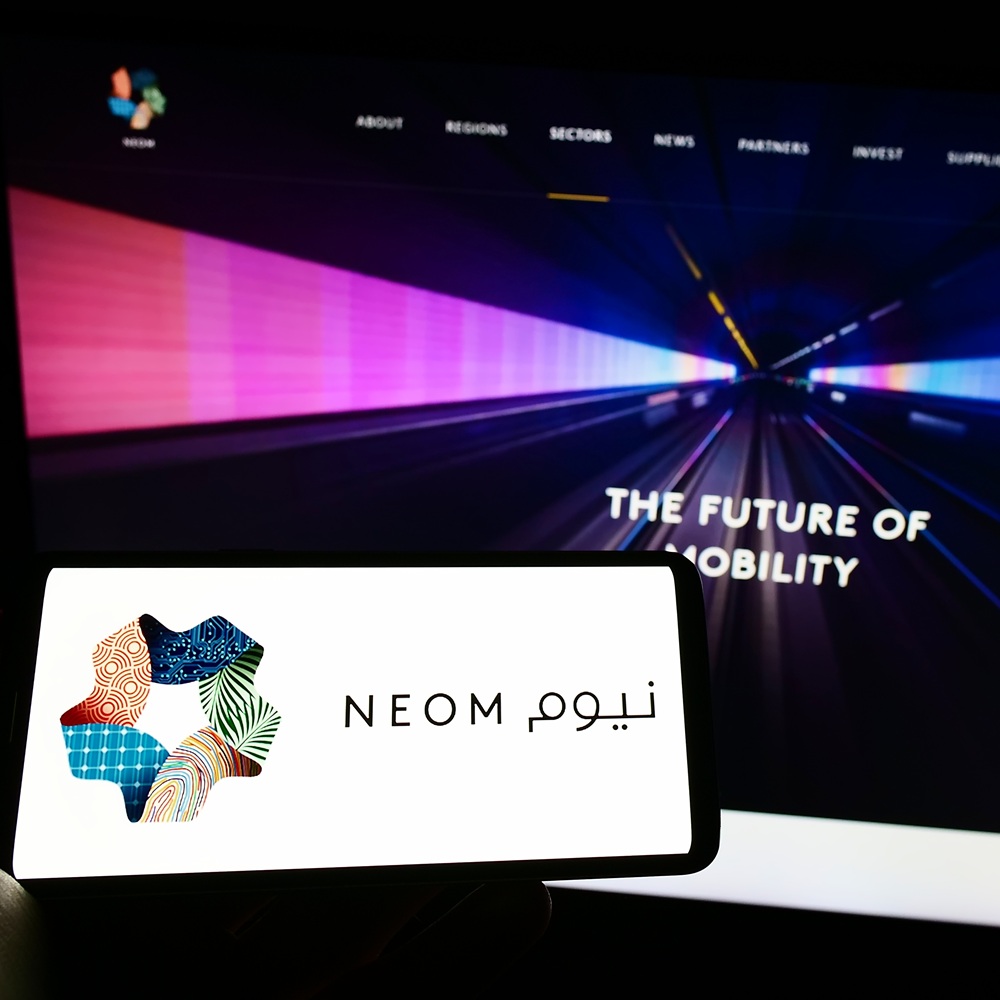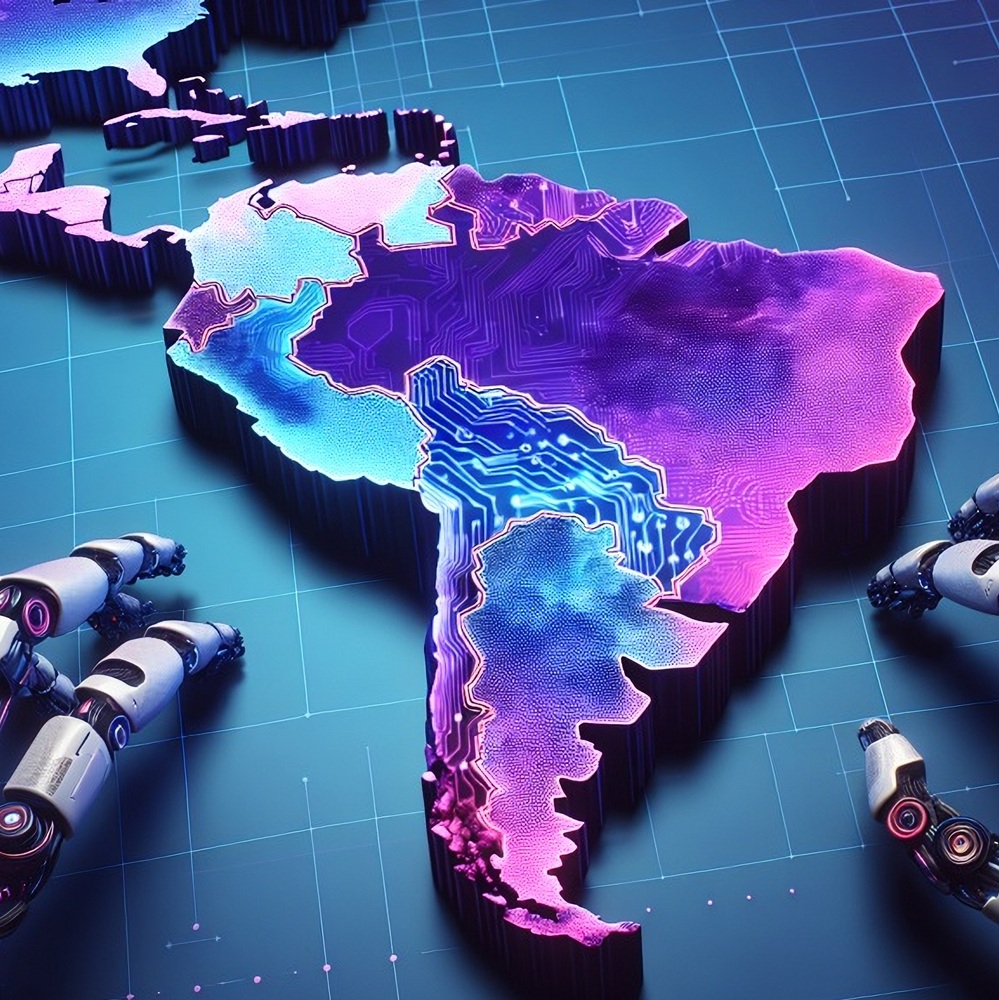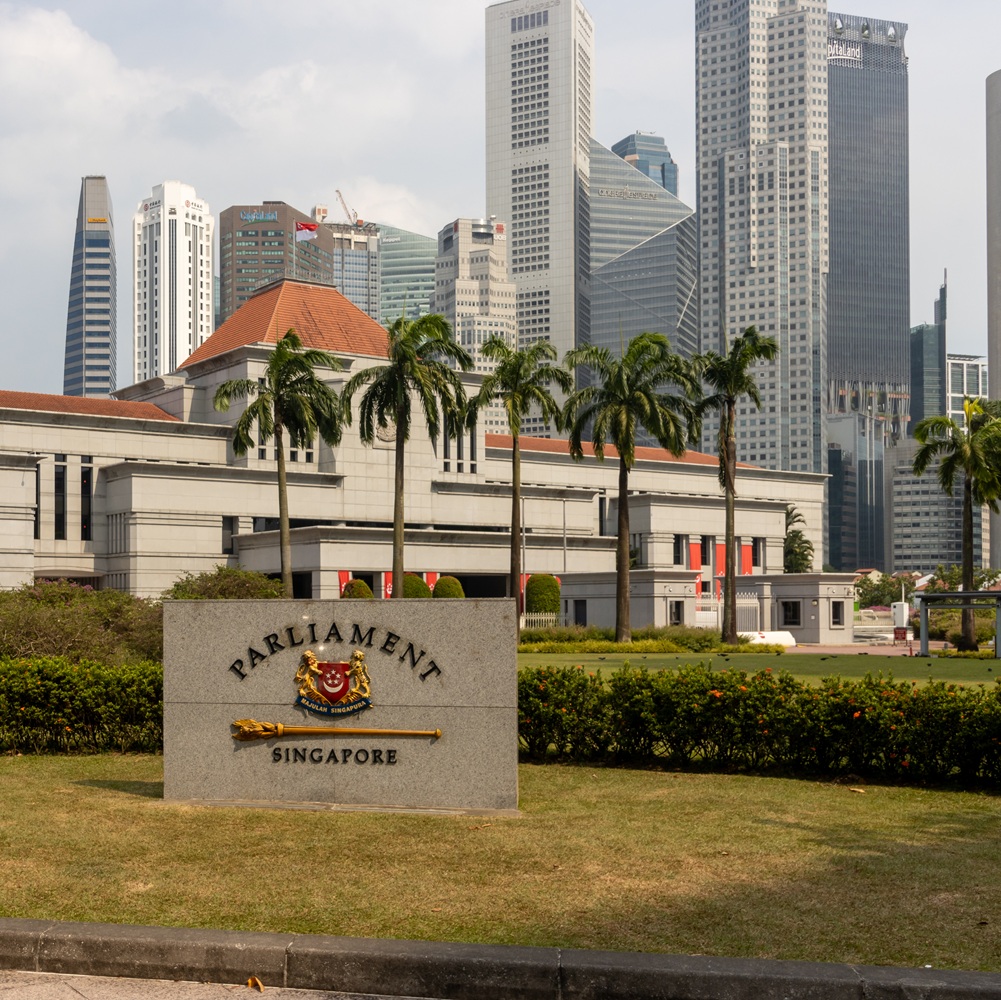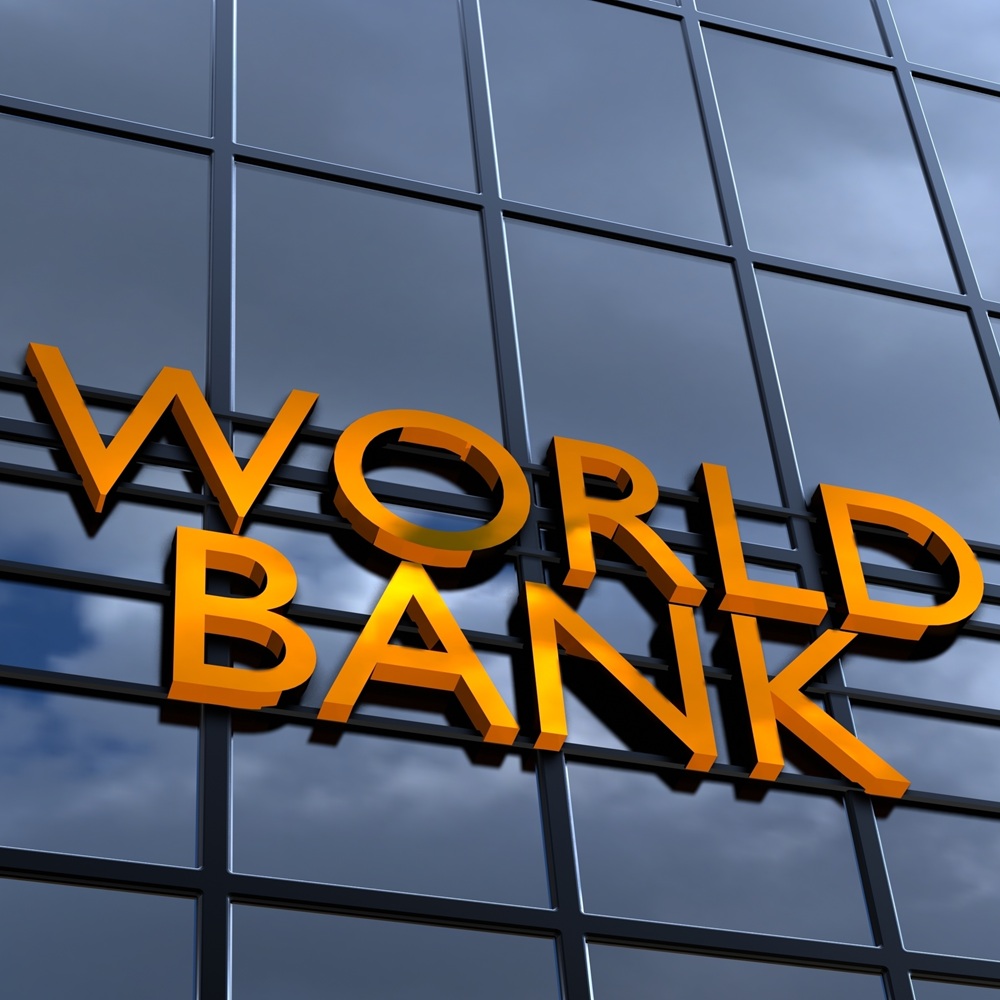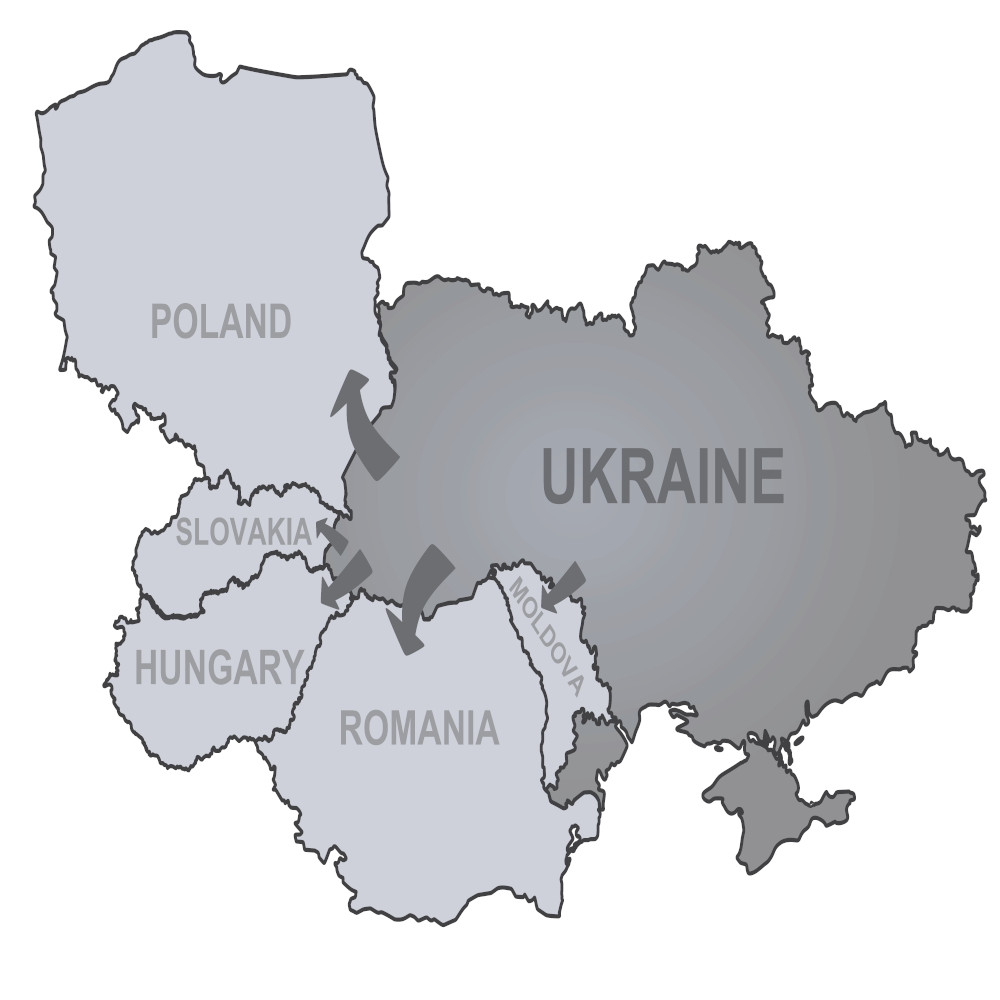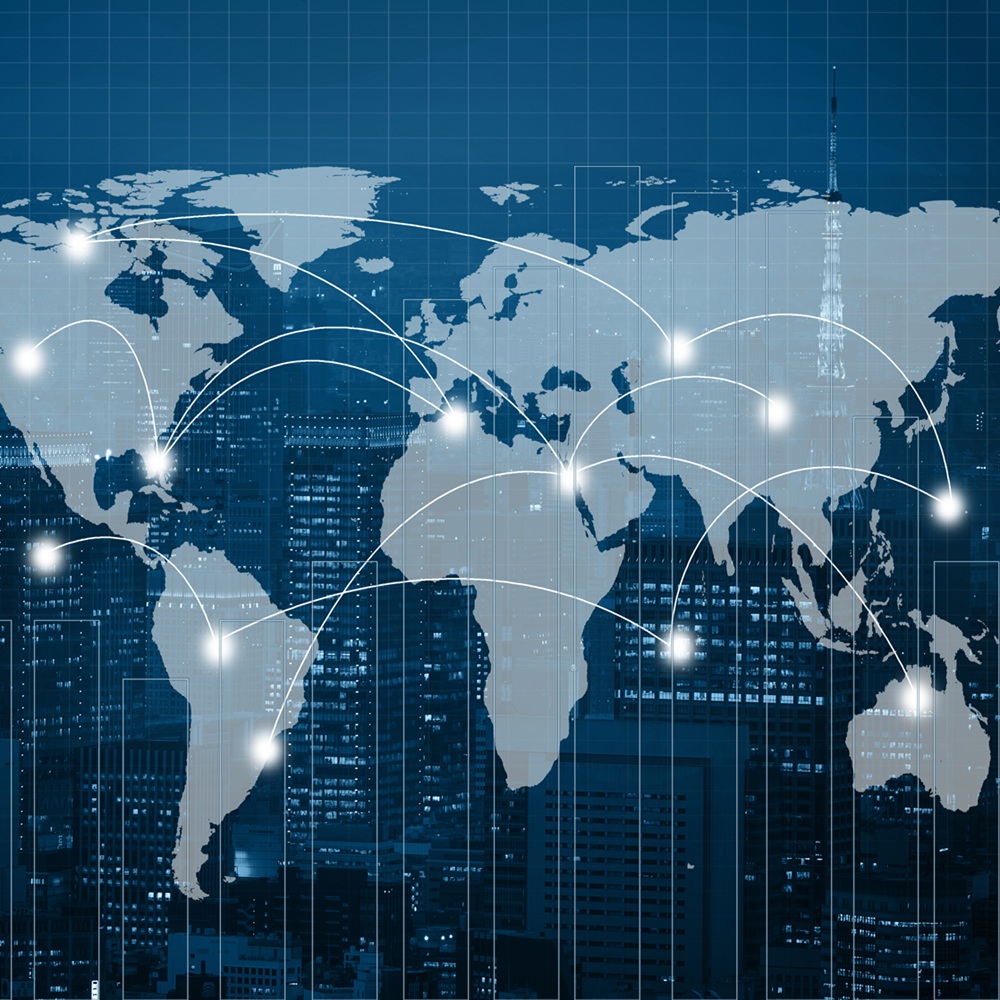A Post-Humanist Perspective of Singapore's Ecomodernist Leadership
by Sasha Maher , Rhiannon Lloyd , Lydia Martin
Abstract Green growth has become doxa in the political economic governance of climate change. This is despite the lack of empirical evidence of its success and concerns that it reifies a business-as-usual dynamic. The question arises: why have practices of ‘green leadership’ maintained a hegemonic hold on how nation states respond to climate change? This provocation examines this question through an analysis of Singapore's policy ambition to become Asia's climate services leader. It draws on post-humanism to suggest that the form of ecomodernist leadership exhibited by Singapore not only perpetuates the status quo but (re)affirms the problematic anthropocentrism underpinning their approach. We demonstrate this through analysis of recent policy, media and private sector documents. Finally, we argue that a focus on Singapore matters because of its influence in the region and networked position globally. Introduction Singapore has emerged as a leader of green growth since gaining independence from Malaysia in 1965. Governed by the People's Action Party (PAP) since 1959, the city-state has pursued a developmental strategy focused on economic growth and wealth accumulation, despite its lack of natural resources. This strategy encompassed value-added manufacturing, high-tech research and financial services, propelling Singapore from a modest per capita GDP in 1965 of USD $516 to a substantial figure of USD $82,807 in 2022 (World Bank, 2022). However, this rapid development brought with it cumulative environmental challenges, including high Green House Gas (GHG) emissions, air pollution, ecosystem degradation and biodiversity loss (Goh, 2001). In response, Singapore reframed these issues as economic opportunities, effectively folding an ecomodernist or green growth approach into its development agenda (Dent, 2018; Hamilton-Hart 2006, 2022). This shift was significantly influenced by Lee Kuan Yew, Singapore's first Prime Minister, whose vision of a ‘Garden City’ involved a massive, ongoing tree-planting initiative. This initiative was not just an ecological project but a strategic move to attract foreign investment by showcasing Singapore as a modern, liveable city, thereby aligning nature conservation with economic development (Schneider-Mayerson, 2017). Building on Prime Minister Lee Kuan Yew's leadership, Singapore has continued to adopt ecomodernist policies, promoting concepts such as sustainability as essential for maintaining its competitive edge in the global arena. The state's stance on climate change illustrates this approach: initially seen as a threat and often couched as an enemy in official discourse, climate change has been transformed into an opportunity for growth. This perspective is epitomised in the annual three-day Ecosperity conference, an elite gathering emphasising the synergy between ecological sustainability and economic prosperity. However, this green growth approach has faced criticism for prioritising human needs over ecological integrity (Dent, 2018; Schneider-Mayerson, 2017; Wong, 2012), suggesting that Singapore's model of ‘green’ leadership may not be sufficient for addressing the root causes of climate change and other environmental challenges. We are similarly concerned at Singapore's leadership stance towards climate change. The latest rendition of this is its ambition to become Asia's climate finance ‘leader’ and a hub of carbon trading. Not only does Singapore's green growth approach narrowly cast complex environmental issues as technical problems requiring technical solutions but it renders nature as an object to be used for human development. This anthropocentrism negates non-human agency, instrumentalises nature and limits the radical change necessary as others have noted (Böhm and Sullivan, 2021; Ergene, Banerjee and Hoffman, 2021; Nyberg and Wright, 2023). In the following provocation, we draw on post-humanist critique of anthropocentrism to give a brief overview of green growth (Braidotti, 2013, 2019; Calás and Smircich, 2023). Second, we outline Singapore's emissions profile and latest policy response. We then surface three themes which are indicative of how Singapore's green leadership frames nature as non-agentic and subservient to humans. These themes are: ‘nature as risk producer’, ‘nature as instrument’ and ‘nature's demise as opportunity’. Anthropocentrism and Green Growth The discourse on greening capitalism emerged in the mid-2000s as initiatives by the United Nations Environmental Program, OECD and World Bank. At the Rio + 20 Conference these three organisations released publications promoting green growth with titles that evoked mutual compatibility such as Inclusive Green Growth: The Pathway to Sustainable Development and Toward a Green Economy: Pathways to Sustainable Development and Poverty Eradication. Subsequently, the United Nations Framework Convention on Climate Change enshrined green growth in the 2015 Paris Agreement in Article 10, paragraph 5, ‘Accelerating, encouraging and enabling innovation is critical for an effective, long-term global response to climate change and promoting economic growth’ (United Nations UNFCCC, 2015: 27). Since then, the prevalence of green growth ideas has accelerated and diffused globally, taken up by states supranational organisations and non-states actors. It has remained a key policy theme at influential climate governance fora. For example, at the recent Green Swan 2023 conference, keynote Sir Nicolas Stern confidently declared that ‘there's no conflict between action on climate change and economic growth. Actually, it's the opposite. Action on climate change will drive economic growth’. Omitted from Sterns's assertion is recognition of the ‘coupling’ effect whereby economic growth has also led to the exploitation of non-humans and a concomitant climate crisis. Green growth approaches view nature as the means to create economic development as measured by GDP. The key assumption is that ‘the environment’ and humans as consumers or workers (see Mildenberger 2020) will both equally benefit through this process of instrumentalisation. The method to achieve the ‘decoupling’ of emissions (or ecological destruction) from GDP is via the application of technologies, investment, markets and innovation. Implementation of these methods will ostensibly redirect capital and production towards the efficient use of resources without disrupting consumption patterns and minimising ‘harm’ to nature. Nature in this framing is characterised as both threatening to humans (‘risk producer’) and simultaneously vulnerable (‘object at risk’). In either case, human beings are presupposed as the agents who will restore the orderliness of life; an orderliness where humans are the dominating species (Ruuska, Heikkurinen and Wilen, 2020) and the state of vulnerability is erased (Schwartz, 2019). At its core green growth is founded on the notion of efficiency gains, but as others (Hickel, 2021; Hickel and Kallis, 2019; Jackson, 2021) have noted, empirically there is no evidence that relative or absolute decoupling will arrest and restore the planet nor reduce carbon emissions permanently to levels that could keep global warming below 1.5 degrees. Efficiency has limitations and at some point, input is required to continue to grow which makes ongoing decoupling in the long-term unsustainable. This calls for an urgent rethinking of policy and the opening up of alternative possibilities such as degrowth or post-growth (Jackson, 2021). However, shifting the paradigm away from wealth accumulation and material prosperity would alter production and consumption patterns. As Hickel and Kallis (2019) remark, this type of transformation would not be politically expedient: ‘The assumption is that it is not politically acceptable to question economic growth and that no nation would voluntary limit growth in the name of the climate or environment; therefore, green growth must be true, since the alternative is disaster’ (2019: 484). Green growth may not only be implausible but it also dangerously reifies dualistic thought-structures that universalises and positions humankind as the privileged, superior species, a tendency which has underpinned the exploitative and extractive relationship between humans and nature that has driven climate change. It also ferments a ‘politics of resignation’ in which citizens tacitly accept harmful externalities (Benson and Kirsch, 2010). In line with post-humanist thought, we perceive nature through a relational lens. From this perspective, ‘nature’ is not a separate entity that exists apart from and below ‘culture’ (e.g., humans, organisations and nation states). Rather nature is understood to be a dynamic, open-ended and interactive ‘living system’ that encompasses all forms of life and matter (Braidotti, 2016). This relational framing of nature is positive in that it attributes agency and vitality to all life and not exclusively to humans and their doings (Braidotti, 2013). In short, more-than-human natures such as the ‘natural environment or ‘atmosphere’ are not tractable or deadened backgrounds for human action but are creative forces that shape life, including our own. In taking this ontological position, post-humanism surfaces and critiques anthropocentric assumptions evident in culture and society (Braidotti, 2013), providing a unique standpoint from which to deconstruct and challenge green growth. Singapore the Green City-StateEmissions Profile Singapore's GHG emissions for 2021 totalled 53 MtCO2e (National Climate Change Secretariat, 2021). In 2000, emissions were 38 MtCO2e and continues to increase over time. These emissions cover direct or primary emissions (Scope 1, 2): energy (39.2%), industry (44.4%), transport (14.2%), building (0.9%), households (0.4%), waste and water (0.6%) and others (0.2%). Secondary or indirect emissions (Scope 3) created within the energy sector from Liquid Natural Gas (LNG) at 94% are mostly in industry (16.6%), buildings (12.6%), household (6.6%) and transport (2.2%). Industry emissions amount to over 60% of Singapore's total emissions of which 75% are from the combustion of fossil fuels by the refining and petrochemicals sector (Tan, 2019). Singapore ranks 27th out of 142 countries in terms of emissions per capita but excluded from official statistics are the emissions from bunkering/marine fuels sales which was 148 MtCO2e in 2020 (The International Council of Clean Transportation, 2022). The rationale for the exclusion is that the UNFCC does not require GHG inventories to include emissions from shipping nor aviation. In 2021 Singapore set a new National Determined Commitment target of limiting GHG emissions in 2030 to 60 MtCO2e from 65 MtCO2e. It also brought forward its emission peak year to sometime ‘before 2030’ and confirmed its target to reach net zero emissions ‘as soon as viable in the second half of the century’ (National Climate Change Secretariat, 2022). Singapore's main mitigation actions were outlined in its long-term low-emission development strategy. These comprise three areas: (a) to transform industry, economy and society; (b) to draw on carbon capture, utilisation and storage and low-carbon fuels; and (c) international collaboration to build carbon markets, carbon storage and regional electricity grids. A key policy lever is Singapore's progressive carbon tax rate which covers 43% of emissions according to Climate Action Tracker (2022). The rate was increased from $5 SGD/tCO2e in 2019 to $25/tCO2e in 2024 and will reach $50–80/tCO2e by 2030. Carbon tax-liable companies are permitted to use carbon credits to offset up to 5% of emissions. However, these credits can only be obtained via the Singapore government's International Carbon Credit Framework under Article 6.2 of the Paris Agreement and not the voluntary carbon market. The tax works on multiple fronts: it drives demand to create a carbon market, derisks companies to increase investor confidence and incentivises decarbonisation efforts in Singapore and in credit producing host countries. Singapore's other mitigation efforts consist of energy efficiency and resource optimisation across industry, households, buildings, waste management and public transport. Green Finance Leader Singapore is positioning itself as Asia's hub for carbon trading. The government outlines this in its most recent master plan for addressing climate change: Singapore Green Plan 2030 (SGP). Launched in 2020, SGP 2030 aims to centre the city-state as a regional ‘leader’ in climate action and sustainable development, aligning with global commitments such as the UN's 2030 Agenda and the Paris Agreement. The plan represents a collective effort across five key ministries, guided by the Inter-Ministerial Committee on Climate Change. It focuses on five pillars: City in Nature, Sustainable Living, Energy Reset, Green Economy and Resilient Future, striving for efficient resource use, low-carbon energy adoption and innovation-driven change. Key initiatives include enhancing green spaces, promoting water conservation, expanding clean public transport and mandating clean energy vehicles by 2030. The Green Economy pillar of the SGP is particularly significant, framing environmental challenges as opportunities for economic growth. This involves incentivising carbon capture technologies and establishing Singapore as a carbon services and trading hub through the Green Finance Action Plan 2022 (Monetary Authority of Singapore, 2022). The plan aims to create a robust green financial ecosystem, making Singapore a global centre for green finance. This includes developing markets for sustainable economic solutions, such as green bonds and insurance products. A study commissioned by the government in 2021 highlighted Singapore's potential to become a carbon trading hub, estimating its value between USD 1.8 billion to USD 5.6 billion by 2050 (Carvalho et al., 2021). As part of its green leadership plan Singapore is also entering into strategic partnerships under Article 6.2 with ‘carbon-rich’, developing countries. It has signed agreements with Vietnam, Bhutan, Paraguay, Papua New Guinea, Fiji, Rwanda, Costa Rica, Ghana, Senegal, Dominican Republic, Colombia, Chile, Cambodia, Indonesia, Kenya, Mongolia, Morocco, Peru and Sri Lanka. It also recently signed a Green Economy Agreement with Australia with the aim to generate demand and facilitate the trading of Australian carbon credits. The aim of these Article 6.2 agreements is to facilitate the trading of Internationally Transferrable Mitigation Outcomes or carbon credits which are generated from the reduction of emissions in one country (e.g., PNG) which is then bought by a second country (e.g., Singapore, New Zealand). However, Singapore's interest extends to the role these partnerships play in helping to establish a trading market in Singapore. In its agreements, Singapore asserts that ‘when completed carbon tax liable companies in Singapore will be able to purchase carbon credits from eligible projects to offset up to 5% of their taxable emission’ (National Climate Change Secretariat, 2023). Article 6.2 partnerships not only help reduce costs for Singapore companies but bring to market a portfolio of credit sellers for trading on Singapore's new trading platform, Climate Impact X. Ecomodernist Themes of Nature A post-humanist perspective on Singapore's ambition to transform into a climate leader surfaces three ecomodernist or green growth themes. These themes are: ‘nature as risk producer’, ‘nature as instrument’ and ‘nature's demise as opportunity’. Across these themes, it is implied that humans take priority and should utilise nature to achieve economic growth. A conventional approach would ignore this dualism and support the instrumentalisation of nature without awareness nor concern that this thought-structure plays a key part in producing climate change. In official organisational documents and speeches regarding Singapore's ambitions to create a global carbon trading hub, Singapore is presented as a model city and a vanguard in terms of environmental actions. Reference is also frequently made to the ‘founding father’, and visionary environmental leader, Prime Minister Lee Kuan Yew. Nature as Risk Producer Politicians, officials and industry often, if not always, portray climate change as the result of nature being ‘out of place’ and consequently hostile towards the vulnerable nation-state (Douglas, 1966; Ruuska et al., 2020). For example, below is an extract from the SGP which sets up the catastrophic framing, and two quotes from Prime Minister Lee Hsien Loong followed by Grace Fu Minister for Sustainability and the Environment at the COP28: Climate change is an existential threat of our times. It has brought rising sea levels and extreme weather patterns…Singapore, as a low-lying island state, is particularly vulnerable. Our weather is getting warmer, rainstorms heavier, and dry spells more pronounced (Singapore Government). Singapore [is] a low-lying, alternative-energy disadvantaged island-state. We therefore appreciate the inherent challenges in climate transitions. However, we believe that new technologies, new financing models and new markets offer us hope (Ministry of Foreign Affairs Singapore, 2023). Singapore is a small city-state, lacking in renewable energy. We are a low-lying island that is acutely vulnerable to the threat of rising sea levels. We are an urbanised city near the equator, susceptible to rising temperatures (Ministry of Sustainability and the Environment Singapore, 2023). The narrative that nature is a risk producer is a form of spatial anthropocentrism in which Earth and beyond are considered the rightful and exclusive spaces for humans (Ruuska et al., 2020). If nature was tame and in its proper docile place, then humans would not be at risk. The reasonable response to this logic is to put nature back in its place by constructing hard engineering solutions, such as sea walls and defending infrastructure that deliver services to humans (e.g., water, electricity, transport, telecommunication), alongside the use of soft solutions to absorb the costs of rebuilding, for example, via flood insurance. Nature as Green Growth Tool The case of Singapore demonstrates that the objectification of nature is a prerequisite to instrumentalisation. Our second theme – nature as a green growth tool – is evident in Singapore's continuation of its long-standing Garden City strategy: nature to be altered to ensure the material prosperity of the populace and thus maintain PAP's political legitimacy (Barnard and Heng, 2014; Hamilton-Hart, 2006, 2022; Schneider-Mayerson, 2017). For example, in the SGP, former Prime Minister Lee Kuan Yew is quoted as follows: Over 100 years ago, this was a mudflat, swamp. Today, this is a modern city. Ten years from now, this will be a metropolis. Never fear (Singapore Government). The SGP then follows this quote from Prime Minister Lee by stating that,…Having advanced from mudflats, to metropolis, we will turn our metropolis into a global city of sustainability (Singapore Government). Today, Singapore is a City in a Garden, and is one of the greenest cities in the world. We set aside large nature reserves, with about a third of our island covered by trees. We knew public cleanliness and hygiene were important to prevent diseases in our hot and humid urban environment and took tough measures to enforce them (Singapore Government). There is a direct link made between using nature as a tool and nation building. As a consequence of this argument, any opposition to Singapore's ‘global’ ambitions could be viewed as a threat to the state, unpatriotic and regressive. The use of nature as instrument for green growth is most stark under the Green Economy pillar. Nature's Demise as Opportunity The third theme evident in Singapore's attempts to position itself as a ‘green leader’ also concerns the instrumentalisation of nature but takes it a step further, with nature's destruction as a result of anthropogenic climate change being presented as a means to stimulate economic development. In the SGP, four of the pillars focus on efficiency and optimising production and consumption of natural resources. However, the Green Economy pillar not only seeks to capitalise on nature but intends to prosper from its demise. The discourse on the climate crisis is rewoven as a narrative about ‘seizing’ opportunities from the climate crisis and the ensuring there is pressure on states and corporates to act. Similar to disaster capitalism, the impacts of climate change are a new business venture for Singapore to advance its developmentalist approach. Below are instances of this discourse: As the world transits to a low-carbon future, there are many exciting new opportunities in the green economy. For instance, the increasing demand for green financing and carbon services will create good jobs and new opportunities for our enterprises (Ministry of Trade and Industry Singapore, 2022). Singapore's Green Plan aims to harness sustainability as ‘a new engine of growth’ …Under the plan, the Singaporean government will lead and drive all economic actors to make the transition toward more sustainable economic models, including establishing the country as a hub for green finance, carbon trading and sustainability consultancy (Wangkiat, 2021). We must seek out new areas of cooperation. This will allow us to deepen collaboration while also strengthening our relevance as a global business hub. Sustainability is one area where there are interesting opportunities for growth and strong potential for international collaboration. Green financing, carbon services, and trading are some examples of the new industries that we can look forward to in the green economy (Ministry of Trade and Industry Singapore, 2023). Singapore is unequivocal in highlighting the competitive advantage that the climate crisis holds for the state. This intensification of the instrumentalism of its Garden City strategy serves not only to commodify but also to financialise climate change. As Ergene, Banerjee and Hoffman (2021: 1320) remark, ‘The Anthropocene is not a story of unintended consequences but is a direct result of a political economy that privileges wealth accumulation at the expense of environmental destruction’. The growth imperative inherent in capitalism relies on the appropriation of nature's ‘resources’ at a low-cost despite ecological consequences. Capitalism seeks to exploit ‘cheap’ resources, including land, labour and energy. This pursuit of cheap inputs is founded on the ontological separation between humans and nature, and the devaluing of nature and some humans compared to others. Capitalism unleashes ‘a “metabolic rift” in the relationship between humans and the earth, resulting in an environmental crisis that now threatens the very basis of life on the planet’ (Wright et al., 2018: p. 459; see also Foster, 2012; Nyberg et al., 2022). Conclusion The three themes explored above underscore how Singapore continues to conceptualise nature as ‘other’. The current understanding of ‘green leader’ and what is legitimate and required in order to be considered ‘green’ maintains a primarily economically centred political agenda. This ‘ecomodernist leadership’ regime is preoccupied by quantitative measures of a known and knowable nature. In short, being ‘green’ requires the improvement of these numbers in directions agreed as beneficial to both the economic and environmental systems they reflect and relate to. Such instrumentalism provides one means towards green futures, but we would argue that this dangerously reifies the dualistic exploitative relations that underpin climate change (e.g., Moore, 2016). Green growth and other notions of ‘greening’ (e.g., Green Economy, Green Finance) do not alter the problematic of anthropocentrism but rather propagate and support a Promethean logic (Dryzek, 2022). So, although Singapore's portion of global emissions is small at 0.1%, we would suggest that Singapore's contribution to climate change extends beyond this number due to its green leadership stance and practices. However, in this respect, Singapore is not alone, various influential multinational institutions, civil society, private sector and state actors such as Australia and New Zealand could also be viewed as holding additional responsibilities. Declaration of Conflicting InterestsThe author(s) declared no potential conflicts of interest with respect to the research, authorship, and/or publication of this article.FundingThe author(s) received no financial support for the research, authorship, and/or publication of this article.ReferencesBarnard TP, Heng C (2014) A city in a garden. In: Barnard TP (ed) Nature contained: Environmental histories of Singapore. Singapore: NUS Press, 281–306.Benson P, Kirsch S (2010) Capitalism and the politics of resignation. Current Anthropology 51(4): 459–486.Böhm S, Sullivan S (2021) Introduction. In: Climate crisis? What climate crisis? Negotiating climate change in crisis. Cambridge: Open Book Publishers, 1–3.Braidotti R (2013) Posthuman humanities. European Educational Research Journal 12(1): 1–19.Braidotti R (2016) Posthuman critical theory. In: Banerji D and Paranjape M (eds) Critical posthumanism and planetary futures. New Delhi: Springer, 13032.Braidotti R (2019) A theoretical framework for the critical posthumanities. Theory, Culture and Society 36(6): 31–61.Calás MB, Smircich L (2023) Organization studies, feminisms and new materialisms: On thinking-saying-doing otherwise. In: A research agenda for organization studies, feminisms and new materialisms. Cheltenham: Edward Elgar Publishing, 1–31.Carvalho M, Alvarez Campo C, Tewari R, et al. (2021) Study of Singapore as a carbon services hub – key findings. South Pole Carbon Asset Management Ltd.Climate Action Tracker (2022) Singapore [Online]. https://climateactiontracker.org/countries/singapore/ (accessed 4 May 2024).Climate Impact X Carbon credits that deliver real impact [Online]. https://www.climateimpactx.com/about (accessed 4 May 2024).Dent CM (2018) East Asia’s new developmentalism: State capacity, climate change and low-carbon development. Third World Quarterly 39(6): 1191–1210.Douglas M (1966) Purity and Danger. London: Routledge and Kegan Paul.Dryzek J (2022) The Politics of the Earth: Environmental Discourses. Oxford: Oxford University Press.Ergene S, Banerjee SB, Hoffman A (2021) (Un)Sustainability and organization studies: Towards a radical engagement. Organization Studies 42(8): 1319–1335.Foster JB (2012) The planetary rift and the new human exceptionalism: A political-economic critique of ecological modernization theory. Organization and Environment 25(3): 211–237.Goh DPS (2001) The politics of the environment in Singapore? Lessons from a “strange” case. Asian Journal of Social Science 29(1): 9–34.Green Swan Conference (2023) Session 3 – panel 2: Macroeconomic impacts of transition and physical risks: a policy perspective. Virtual Conference. https://www.bis.org/events/green_swan_2023/overview.htm (accessed 25 February 2024).Hamilton-Hart N (2006) Singapore’s climate change policy: The limits of learning. Contemporary Southeast Asia 28(3): 363–384. http://www.jstor.org/stable/25798796Hamilton-Hart N (2022) Climate change governance in Singapore: Cautious mitigation in a developmental state. In: Governing climate change in Southeast Asia. New York: Routledge, 148–167.Hickel J (2021) What does degrowth mean? A few points of clarification. Globalizations 18(7): 1105–1111.Hickel J, Kallis G (2019) Is green growth possible? New Political Economy 25(4): 469–486.Jackson T (2021) Post growth: Life after capitalism. Cambridge: Polity Press.Mildenberger M (2020) Carbon captured: How business and labor control climate politics. Cambridge, London: MIT Press.Ministry of Foreign Affairs Singapore (2023) Intervention by Prime Minister Lee Hsien Loong in Session I “One Earth” at the G20 New Delhi Summit, 9 September 2023 [Online]. https://www.mfa.gov.sg/Newsroom/Press-Statements-Transcripts-and-Photos/2023/09/20230909-PM-G20-Intervention (accessed 4 May 2024).Ministry of Sustainability and the Environment Singapore (2023) COP28 Singapore Pavilion Official Launch – Ms Grace Fu [Online]. Available: https://www.mse.gov.sg/resource-room/category/2023-11-30-cop28-singapore-pavilion-launch (accessed 4 May 2024).Ministry of Trade and Industry Singapore (2022) Singapore Economy 2030: Seizing Opportunities, Energising Enterprises [Online]. https://www.mti.gov.sg/-/media/MTI/COS-2022/MTI-Business-Budget-Booklet-2022.pdf (accessed 4 May 2024).Ministry of Trade and Industry Singapore (2023) Speech by Minister Gan Kim Yong at the 39th Singapore Economic Roundtable [Online]. https://www.mti.gov.sg/Newsroom/Speeches/2023/11/Speech-by-Minister-Gan-Kim-Yong-at-the-39th-Singapore-Economic-Roundtable (accessed 4 May 2024).Monetary Authority of Singapore (2022) Green Finance Action Plan [Online]. https://www.mas.gov.sg/-/media/MAS-Media-Library/development/sustainable-finance/without-retail-ESG-funds-GFAP-Infographic_June-2022.pdf?la=en&hash=B49713D36266B8D8EF3CA8EEBD0FEFFD9ACBDAA0 (accessed 4 May 2024).Moore JW (2016) Anthropocene or capitalocene? Nature, history, and the crisis of capitalism. Oakland: PM Press.National Climate Change Secretariat (2021) Singapore's Emissions Profile [Online]. https://www.nccs.gov.sg/singapores-climate-action/singapores-climate-targets/singapore-emissions-profile/ (accessed 4 May 2024).National Climate Change Secretariat (2022) Singapore's Long-Term Low-Emissions Development Strategy [Online]. https://www.nccs.gov.sg/media/publications/singapores-long-term-low-emissions-development-strategy/ (accessed 4 May 2024).National Climate Change Secretariat (2023) Singapore and Paraguay Substantively Conclude Negotiations on Implementation Agreement [Online]. https://www.nccs.gov.sg/media/press-releases/singapore-and-paraguay-substantively-conclude-negotations-on-ia/ (accessed 4 May 2024).Nyberg D, Wright C (2023) Organising Responses to Climate Change: The Politics of Mitigation, Adaptation and Suffering. Cambridge: Cambridge University Press.Nyberg D, Wright C, Bowden V (2022) Organising Responses to Climate Change: The Politics of Mitigation, Adaptation and Suffering. Cambridge, UK: Cambridge University Press.Ruuska T, Heikkurinen P, Wilen K (2020) Domination, power, supremacy: Confronting anthropolitics with ecological realism. Sustainability 12(7): 1–20.Schneider-Mayerson M (2017) Some islands will rise: Singapore in the anthropocene. Resilience: A Journal of the Environmental Humanities 4(2–3): 166–184.Schwartz SW (2019) Measuring vulnerability and deferring responsibility: Quantifying the anthropocene. Theory, Culture & Society 36(4): 73–93.Singapore Government Green Plan – Vision [Online]. https://www.greenplan.gov.sg/vision/ (accessed 24 February 2024).Tan A (2019) Parliament: About 75% of industrial emissions are from refining and petrochemicals sector [Online]. https://www.straitstimes.com/politics/parliament-about-75-of-industrial-emissions-are-from-refining-and-petrochemicals-sector (accessed 4 May 2024).The International Council of Clean Transportation (2022) Exporting emissions: Marine fuel sales at the Port of Singapore. Washington.United Nations Framework Convention on Climate Change (2015) Adoption of the Paris Agreement. Paris, FR: UNFCCC.Wangkiat P (2021) Singapore Government Pushes Ahead With Green Plan 2030 [Online]. https://greenfiscalpolicy.org/singapore-government-pushes-ahead-with-green-plan-2030/ (accessed 4 May 2024).Wong CML (2012) The developmental state in ecological modernization and the politics of environmental framings: The case of Singapore and implications for east Asia. Nature and Culture 7(1): 95–119.World Bank (2022) GDP per capita (current US$) – Singapore [Online]. https://data.worldbank.org/indicator/NY.GDP.PCAP.CD?locations=SG (accessed 4 May 2024).Wright C, Nyberg D, Rickards L, et al. (2018) Organizing in the anthropocene. Organization 25(4): 455–471.











